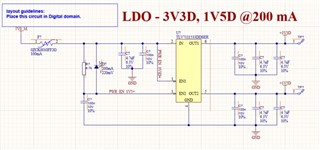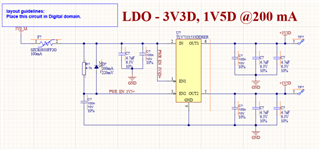Hi, I am trying to find out/confirm the timing relationship between EN1, 2 and VOUT1, VOUT2.
I have a power sequencing requirement and can't have VOUT2 (1.5V) reaching its final value before VOUT1 (3V3) reaching its final value. But they can reach the final value at the same time.
I can see Startup time tSRT is a common value for this device. Can you please advise if I can connect the EN1, 2 pin to VIN direct? Or should I do some RC network to delay EN2?
Thanks.
Regards
Billy



